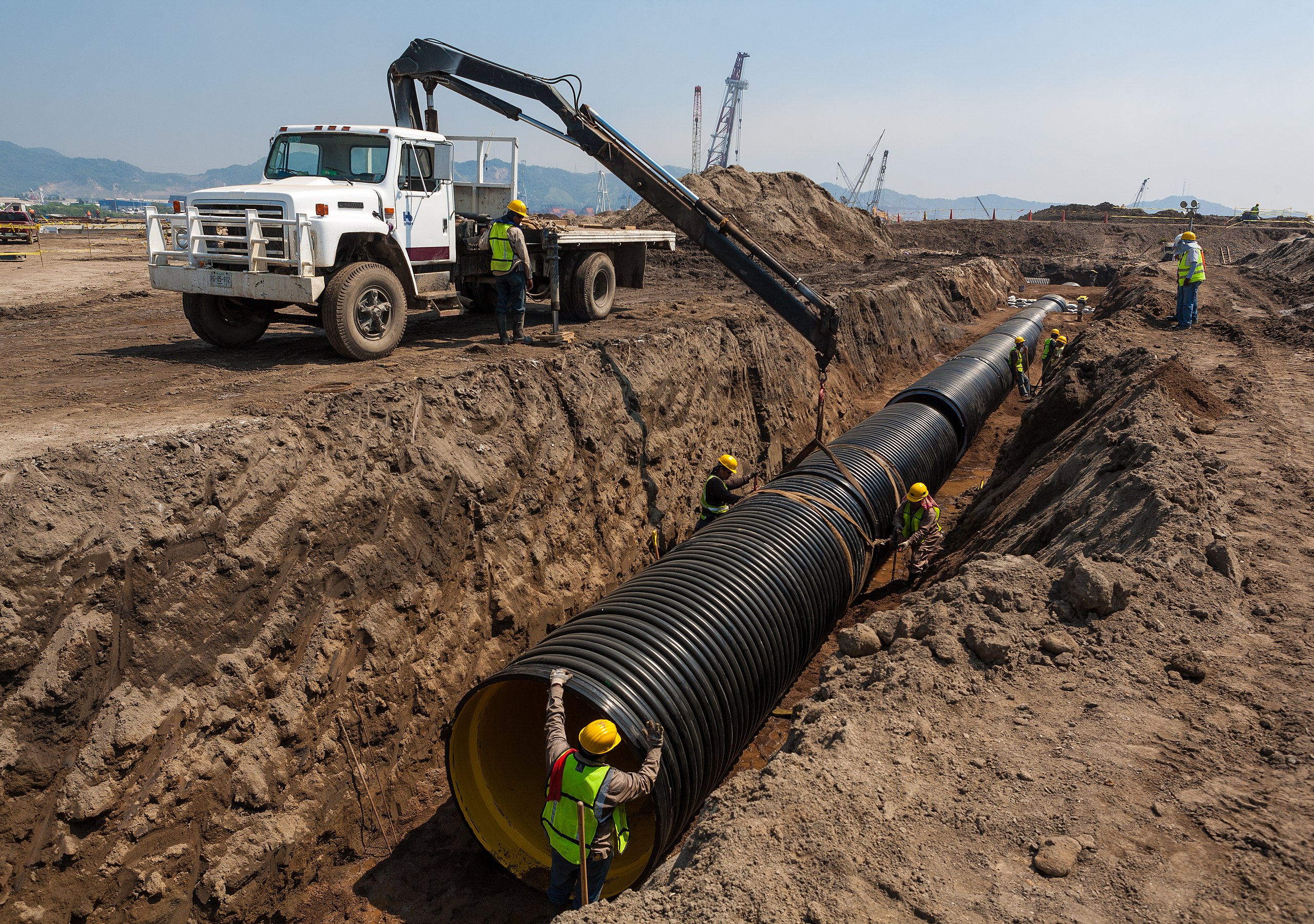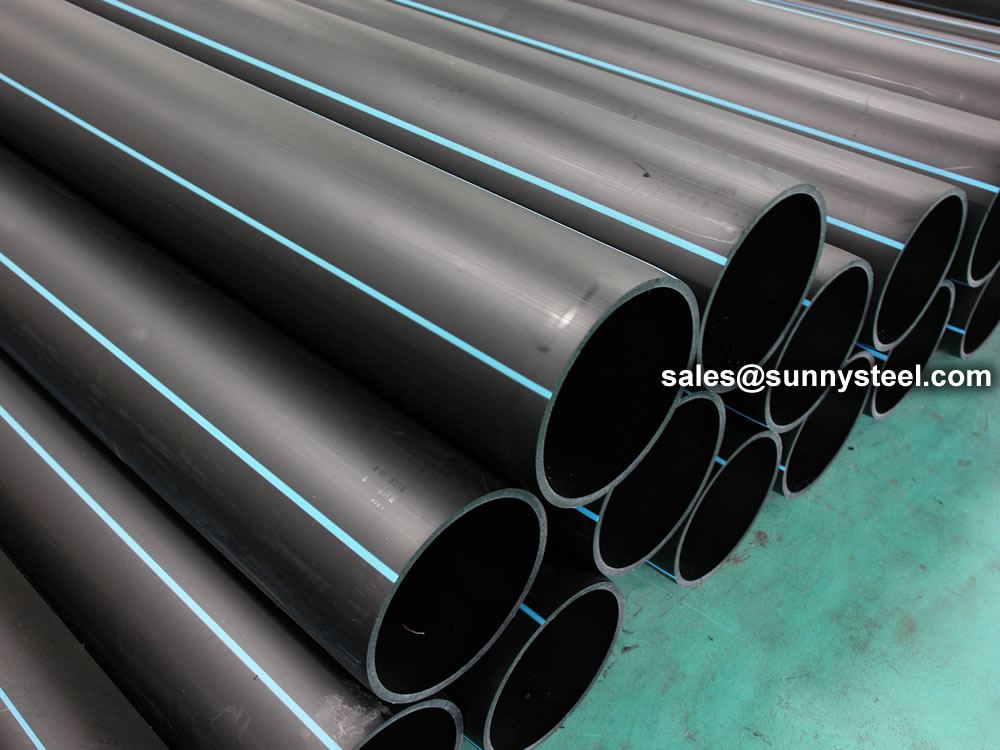In-Depth Look to hdpe pipe fittings Midland TX and Their Advantages
Discover the Production Process Behind High-Quality HDPE Pipe and Its Applications
The production procedure of high-grade HDPE pipelines is detailed and methodical. It begins with the selection of resources that boost performance. Following this, ethylene undertakes polymerization to create resin, which is then shaped with extrusion. Quality control is paramount, making sure that the end product satisfies stringent standards. However, the journey of HDPE pipes does not end with manufacturing. Their applications throughout various industries reveal a more comprehensive value worth analyzing.
Comprehending HDPE: Qualities and Advantages

High-density polyethylene (HDPE) is a flexible polycarbonate understood for its resilience and resistance to numerous ecological factors. This product shows superb tensile strength, making it ideal for demanding applications. Its low-density structure adds to a light-weight item, promoting convenience of managing and installation. HDPE also showcases remarkable resistance to chemicals, which minimizes deterioration when revealed to rough compounds.
The material's low dampness absorption better enhances its durability, making it optimal for usage in pipelines and storage space containers. Additionally, HDPE is resistant to ultraviolet (UV) radiation, ensuring that products maintain their integrity also when revealed to sunshine. Its adaptability allows for the production of elaborate forms without jeopardizing strength. The green nature of HDPE, usually originated from recycled products, contributes to its appeal, promoting lasting techniques in manufacturing. Overall, these residential properties and benefits make HDPE a preferred choice for various commercial and consumer applications.
Basic Material Choice for HDPE Production
The choice of basic materials for HDPE manufacturing is necessary to verify the last product fulfills the preferred requirements and top quality requirements. High-density polyethylene (HDPE) is mostly produced from polymerized ethylene, obtained from fossil gas such as gas or crude oil. The top quality of these feedstocks substantially influences the mechanical and thermal buildings of the last HDPE.
Additives also play a substantial function in boosting HDPE's performance, consisting of antioxidants, UV stabilizers, and colorants, which boost longevity and resistance to environmental variables. The choice process have to consider not just the chemical structure of the raw products but likewise their handling features to guarantee efficient manufacturing.
The sourcing of raw materials should prioritize sustainability and conformity with environmental regulations, as accountable practices are crucial in today's market. Eventually, careful basic material option lays the foundation for generating high-quality HDPE pipelines ideal for diverse applications.
The Extrusion Process: Shaping HDPE Pipeline
The extrusion process plays an important role in forming HDPE pipes, starting with precise material preparation strategies that ensure suitable flow and consistency. Similarly essential is the design of the die, which straight influences the last measurements and surface top quality of the pipe. With each other, these variables contribute greatly to the performance and quality of HDPE pipeline manufacturing.
Product Preparation Techniques
Reliable production of HDPE pipes begins with careful product prep work techniques, specifically the extrusion process. During this stage, high-density polyethylene material is very first dried out to remove moisture, ensuring optimal circulation features. The material is after that fed right into the extruder, where it goes through home heating and melting, transforming into a thick state. This home heating procedure is carefully managed to maintain the material's honesty and performance. The molten HDPE is compelled via a die, forming it right into a continual pipe type. Correct temperature level management throughout extrusion is important, as it directly impacts the product's buildings and the last product top quality. When formed, the HDPE pipeline is cooled and reduced to specified sizes, all set for succeeding processing and applications.
Die Layout Importance
Accuracy in die style plays a vital role in the extrusion process of HDPE pipelines. The die serves as the last shaping tool, straight influencing the pipeline's dimensions, wall surface thickness, and surface finish. A well-designed die guarantees consistent product flow, reducing issues such as abnormalities and weak areas. The geometry of the die must be enhanced to suit the certain residential properties of HDPE, including its viscosity and thermal behavior throughout extrusion. In addition, the cooling rate of the material as it travels through the die can considerably affect the pipe's architectural integrity. Investing in sophisticated die modern technology is important for suppliers intending to create high-quality HDPE pipelines that satisfy sector criteria and customer expectations.
Quality Assurance Steps in HDPE Production
Although various aspects influence the quality of HDPE pipeline manufacturing, efficient quality assurance steps are important to ensure uniformity and integrity in the end product. Key quality control practices consist of extensive material assessment, confirming that the raw polyethylene satisfies well-known criteria for pureness and density. Throughout the extrusion process, parameters such as temperature level, stress, and cooling time are very closely kept an eye on to maintain dimensional precision and structural stability
On top of that, post-production testing is essential; manufacturers usually conduct hydrostatic examinations to examine the pipeline's strength and resistance to stress. Aesthetic examinations for surface flaws additionally improve quality control. Qualification from pertinent standards organizations, like ASTM or ISO, supplies an added layer of reliability. By executing these complete high quality control steps, visit makers can decrease defects, enhance performance, and make certain that the HDPE pipelines meet the certain needs of different applications, inevitably resulting in consumer satisfaction and depend on in the item.
Applications of HDPE Pipe Throughout Industries
HDPE pipes are made use of throughout different fields because of their resilience and flexibility. In water circulation systems, they ensure efficient shipment, while in wastewater management, they supply dependable solutions for waste transport. Furthermore, agricultural irrigation networks gain from HDPE's resistance to corrosion and adaptability, making it a suitable selection for contemporary farming techniques.

Water Circulation Systems
A substantial variety of markets rely upon high-density polyethylene (HDPE) pipes for efficient water distribution systems. Understood for their sturdiness and resistance to deterioration, HDPE pipelines are commonly utilized in local water supply networks, agricultural watering, and commercial applications. Their lightweight nature facilitates very easy handling and installation, decreasing labor prices and time. Additionally, HDPE pipes can suit different stress degrees, making them appropriate for both low and high-pressure systems. Pipe Manufacturing Midland TX. The flexibility of the material enables smooth integration right into existing framework, reducing the requirement for comprehensive excavation. In addition, HDPE's resistance to chemical seeping guarantees that the water provided remains risk-free and clean, making it an optimal selection for maintaining the high quality of potable water across different industries
Wastewater Monitoring Solutions
Effective water click for more info distribution systems also lead the means for innovative wastewater monitoring solutions, where high-density polyethylene (HDPE) pipelines play a substantial function. Prominent for their resilience and resistance to corrosion, HDPE pipelines are optimal for delivering wastewater in various setups. Their versatility enables for simple installation in complex settings, minimizing the demand for substantial excavation. In addition, HDPE's smooth interior surface area reduces rubbing, improving circulation prices and performance. These pipes are additionally immune to chemical leaching, making certain that pollutants do not endanger the surrounding setting. Industries, municipalities, and therapy centers increasingly count on HDPE pipes for their dependability and durability, making them a preferred selection for contemporary wastewater administration systems. This flexibility underscores the important relevance of HDPE pipes across countless applications.
Agricultural Irrigation Networks
Agricultural irrigation networks profit significantly from the usage of high-density polyethylene (HDPE) pipelines, which offer effective and reliable water distribution to plants. HDPE pipes are lightweight, making them simple to move and install, while their flexibility enables numerous setups in diverse surfaces. These pipes show outstanding resistance to rust, chemicals, and UV radiation, making certain resilience in harsh agricultural settings. Furthermore, their smooth interior surface area minimizes friction loss, maximizing water circulation and decreasing energy prices associated with pumping. The durability of HDPE pipes, commonly exceeding half a century, adds to lower upkeep and substitute costs. Farmers progressively rely on HDPE pipelines to enhance irrigation performance and promote sustainable agricultural methods, eventually leading to improved crop returns and resource preservation.

Future Fads in HDPE Pipe Innovation
As the demand for sustainable and efficient framework expands, developments in HDPE pipeline innovation are poised to transform numerous sectors. Arising fads consist of the assimilation of smart innovations, such as sensors and IoT abilities, which assist in real-time tracking of pipeline problems, minimizing upkeep costs and stopping leakages. In addition, the growth of advanced manufacturing techniques, such as 3D printing, is Continued making it possible for the manufacturing of complicated, tailored pipeline layouts that provide to specific project requirements.
Furthermore, the focus on recycling and round economic climate practices is driving the technology of HDPE pipelines made from recycled products, boosting sustainability. Enhanced jointing approaches, such as electro-fusion and mechanical fittings, are additionally improving installment performance and dependability. The expanding emphasis on environmental regulations is pushing makers to adopt greener manufacturing processes, making sure that HDPE pipes not only fulfill market criteria however also cultivate an even more lasting future for infrastructure advancement.
Often Asked Inquiries
Exactly How Does HDPE Compare to Various Other Plastic Materials?
HDPE outmatches lots of other plastic materials concerning longevity, chemical resistance, and versatility. Its low density and high tensile strength make it ideal for numerous applications, usually going beyond choices in both efficiency and longevity.
What Are the Ecological Influences of HDPE Production?
The environmental impacts of HDPE production include greenhouse gas emissions, power intake, and possible air pollution from producing procedures. Furthermore, inappropriate disposal can cause dirt and water contamination, elevating concerns about lasting environmental impacts.
Can HDPE Water Lines Be Reused?
Yes, HDPE pipes can be recycled. Many facilities approve used HDPE for handling, changing it right into new products. This reusing adds to sustainability initiatives, reducing plastic waste while preserving sources and energy in the production cycle.
What Is the Life Expectancy of HDPE Pipes?

How Do Temperature Variants Impact HDPE Pipeline Performance?
Temperature variations greatly impact HDPE pipeline performance, affecting flexibility and strength. Heats can result in softening, while low temperature levels may trigger brittleness, eventually influencing the pipe's durability and suitability for various applications in diverse atmospheres.